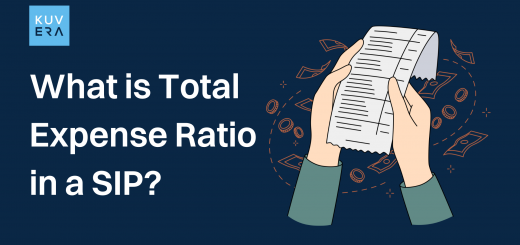What is an Index?
An index is like a collection or mix of various investments like stocks, bonds, or derivatives, offering insights into the performance of specific segments of the market or certain investment strategies.
It’s a way to gauge how a portion of the market or a type of investment is faring overall. For instance, the NIFTY 50 tracks the performance of the 50 largest and most traded companies on the National Stock Exchange, serving as a barometer for the broader Indian stock market. Similarly, the SENSEX is another example, reflecting the market movements of 30 well-established and financially sound companies listed on the Bombay Stock Exchange. As the values of the companies in these indexes rise or fall, the indexes adjust their figures accordingly to mirror these market trends.
Why are stock market indices important?
Stock market indices are crucial because they show us how well the market and certain sectors are doing. For example, the performance of the Sensex tells us not just about the day’s trading in India but also gives hints about the Indian economy’s health.
Indices affect our finances in various ways. The movement in an index like the NIFTY 50 can influence the returns on investments linked to market performance, such as certain mutual funds or ETFs. Additionally, government indices play a role in determining things like how much is deducted from the Provident Fund from salaries or changes in loan interest rates. These indices offer a quick snapshot, helping investors and economists understand market trends and economic indicators.
Stock market indices you should know about
1. Nifty 50
NIFTY is a key market index from the National Stock Exchange (NSE), created on April 21, 1996. The name combines ‘National Stock Exchange’ and ‘Fifty’ to represent its core: the top 50 weighted average of 50 of the largest Indian companies from over 1600 listed on the NSE. These companies come from 12 different sectors of the Indian economy, such as IT, finance, consumer goods, and more, making NIFTY a broad reflection of India’s corporate landscape.
Alongside the BSE’s SENSEX, NIFTY stands as a principal national index, managed by India Index Services and Products (IISL), an NSE-owned entity. The NIFTY 50 tracks the performance of large, well-established Indian companies, offering insights into the health of India’s blue-chip stocks.
Beyond the flagship NIFTY 50, the index includes various sub-indices like NIFTY IT and NIFTY Bank, covering specific sectors. It also plays a vital role in the derivatives market as part of NSE’s Futures and Options (F&O) segment.
2. BSE SENSEX
The SENSEX, or the BSE Sensex, stands as a premier market index from the Bombay Stock Exchange (BSE), established in 1986. The name “Sensex” is a portmanteau of “Sensitive Index,” and it represents a free-float market-weighted index of 30 of the largest and most actively traded stocks on the BSE. These stocks are from diverse sectors of the Indian economy, including IT, finance, consumer goods, and others, offering a comprehensive overview of India’s corporate health.
As a counterpart to the NSE’s NIFTY, the SENSEX serves as one of the main national indices, reflecting the performance of major, established Indian corporations and serving as a barometer for the overall market sentiment.
The BSE Sensex is not just a measure of stock market performance; it also includes sub-indices like the BSE SmallCap, BSE MidCap, and sector-specific indices, which provide a deeper analysis of different market segments. Moreover, the Sensex plays a crucial role in the investment world, influencing both domestic and international investors’ decisions. Managed directly by the BSE, the Sensex is an integral part of India’s financial market, with its movements closely watched by anyone interested in the economic and investment landscape of the country.
Difference between Nifty 50 and BSE Sensex
- Exchange Origin: NIFTY 50 is the flagship index of the National Stock Exchange (NSE) of India, showcasing the top 50 companies by market capitalization, while the BSE Sensex, also known as the S&P BSE Sensex, is from the Bombay Stock Exchange (BSE), representing 30 of the largest and most actively traded stocks.
- Number of Constituents: NIFTY 50 comprises 50 companies from various sectors, reflecting a broad market performance, whereas the BSE Sensex includes 30 major companies, offering a snapshot of the high-cap market segment.
- Management: NIFTY 50 is managed by the India Index Services and Products Ltd (IISL), a subsidiary of NSE, ensuring its accuracy and reliability, while the Sensex is managed directly by the BSE, making it one of the oldest indexes in India.
3. Nifty Bank
The Nifty Bank Index includes some of the biggest and most traded bank stocks in India. It helps investors and others involved in the market see how well Indian banks are doing in the stock market.
Leading stocks in the index are HDFC Bank Ltd. at 31.61%, ICICI Bank Ltd. at 18.20%, followed by Axis Bank Ltd. at 13.02%, Kotak Mahindra Bank Ltd. contributing 12.74%, and the State Bank of India at 10.92%. The calculation of Bank Nifty is based on the free float market capitalization method, similar to other indexes. Additionally, the Bank Nifty includes a variant called the NIFTY Bank Total Returns Index (Bank Nifty TRI). This index was introduced in 2003.
4. India VIX
If you’re new to investing, you’ve probably heard of “India VIX” but might not know what it means. Simply put, India VIX is a way to measure how much the stock market is expected to move in the near future. Think of it as a forecast for how stormy or calm the market waters might be soon.
The India VIX, or Volatility Index, is something the National Stock Exchange (NSE) came up with in 2003 to guess how much the market might go up or down soon. The idea actually started in 1993 with the Chicago Board Options Exchange.
When the market jumps around a lot, the India VIX number goes up, showing there’s a lot of “volatility” or movement. When things are more steady, the number goes down. It’s like a weather report for the stock market, predicting the financial weather for the next 30 days. This helps investors figure out if it’s a good time to buy or sell.
How’s It Different from NIFTY?
India VIX isn’t like NIFTY, which looks at actual stock prices. Instead, India VIX uses math (from something called the Black and Scholes model) and looks at options trading to guess future volatility. It shows this guess as a percentage. If the number is high, expect a lot of movement. If it’s low, the market might be more stable.
5. Dow Jones
The Dow Jones Industrial Average (DJIA) is one of the oldest and most well-known stock market indices in the United States. It tracks the performance of 30 large, publicly-owned companies trading on the New York Stock Exchange (NYSE) and the NASDAQ. The DJIA is often used as a barometer for the overall health of the US stock market and, by extension, the US economy.
Why It Matters to Indian Investors:
Global Market Indicator: The DJIA provides insights into the economic and corporate health of the US, which can influence global financial markets, including India’s. Movements in the DJIA can affect investor sentiment worldwide.
Investment Decisions: Indian investors holding shares in US companies or those interested in investing in US stock markets use the DJIA as a reference point for making informed decisions.
Diversification: Understanding the DJIA can help Indian investors looking to diversify their portfolios internationally. It offers a perspective on potential opportunities or risks in the US market.
Economic Trends: Since the US economy has a significant impact on global economic trends, the DJIA’s performance can offer clues about future economic conditions that might affect Indian companies and the Indian economy.
Currency Impact: The performance of US markets, reflected through indices like the DJIA, can influence the US dollar’s strength. Since the US dollar impacts global trade and currency markets, Indian investors might monitor the DJIA to anticipate changes in exchange rates, affecting their investments and the broader Indian economy.
6. S&P 500
The S&P 500, or Standard & Poor’s 500, is a stock market index that measures the performance of 500 large companies listed on stock exchanges in the United States. Think of it as a giant scoreboard that shows how these big companies are doing. If the S&P 500 is going up, it generally means that the overall stock market is doing well, and if it’s going down, the market is not doing so well.
For Indian investors, the S&P 500 matters for several reasons:
Global Indicator: It serves as a benchmark for the global economy because many of the companies in the S&P 500 operate worldwide. If the S&P 500 is doing well, it often suggests that the global economy, including India’s, might also be doing well.
Investment Diversification: Investing in the S&P 500 can help Indian investors diversify their investment portfolio beyond Indian companies. This means they can spread their risk by not just investing in Indian stocks but also in American companies. Diversification can protect investors from local market volatility.
Growth Opportunities: The S&P 500 includes tech giants and other leading companies that might not have equivalents listed on Indian stock exchanges. By investing in the S&P 500, Indian investors can potentially participate in the growth of these global leaders.
Currency Diversification: Investing in the S&P 500 allows Indians to invest in U.S. dollars, providing a hedge against the depreciation of the Indian rupee. If the rupee weakens against the dollar, the value of their dollar-denominated investments would increase in rupee terms.
Ease of Access: Nowadays, it’s easier for investors from around the world, including India, to invest in foreign stock markets. Various platforms offer Indian investors the option to invest in international funds or directly in stocks listed on the U.S. exchanges, including those in the S&P 500.
7. Nasdaq
The Nasdaq is a global electronic marketplace for buying and selling securities, as well as the benchmark index for U.S. technology stocks. Officially known as the Nasdaq Composite, the index includes over 3,000 stocks that are listed on the Nasdaq stock exchange, with a heavy focus on technology companies.
This makes the Nasdaq particularly reflective of the performance of the tech sector, including major companies like Apple, Amazon, Google’s parent company Alphabet, and Facebook’s parent company Meta. For investors interested in these areas, the Nasdaq offers a gateway to investing in the companies driving these innovations.
Why is Nasdaq important for Indian investors?
Sentiment and Trends: The performance of the Nasdaq, especially because it’s heavily weighted towards technology and innovation-driven companies, can influence global market sentiment, including that in India. A strong performance on the Nasdaq can boost investor confidence worldwide, leading to positive effects on markets globally, including the Indian stock market. Conversely, a downturn in the Nasdaq can lead to increased caution among investors everywhere.
Technology Sector Impact: Given that a significant portion of the Indian stock market includes IT and tech companies, which are part of the global technology ecosystem, movements in the Nasdaq can directly affect these companies’ stock prices. For example, if Nasdaq-listed tech giants perform well or poorly, it can have a direct impact on Indian tech companies due to perceived sector-wide trends or changes in global technology spending.
Foreign Investments: Foreign institutional investors (FIIs) play a significant role in the Indian stock markets, and their investment decisions are often influenced by global market trends, including those indicated by the Nasdaq. A thriving Nasdaq might encourage more foreign investment into Indian markets as global investors seek broader exposure to emerging markets alongside their U.S. tech investments.
Benchmarking and Comparison: For investors and analysts, the Nasdaq serves as a benchmark for technology and growth sectors globally. The performance of Indian tech companies, many of which are listed on Indian stock exchanges, can be indirectly compared to their global counterparts on the Nasdaq. This comparison can influence investment decisions, stock valuations, and strategic moves by companies aiming for global competitiveness.
Getting to know stock market indices like the Nifty 50, Dow Jones, and BSE Sensex is key for investors trying to find their way through the stock market’s twists and turns. These indices give us a peek into how the market is doing, the health of the economy, and where the good investment spots might be. A thorough knowledge of these indices helps an investor be better prepared and make smart financial decisions.
Interested in how we think about the markets?
Read more: Zen And The Art Of Investing
Watch here: ELSS: Saving tax through mutual funds
Start investing through a platform that brings goal planning and investing to your fingertips. Visit kuvera.in to discover Direct Plans and Fixed Deposits and start investing today.












Swapan Kumar Bhattacharyya
March 19, 2024 AT 20:27
Excellent App